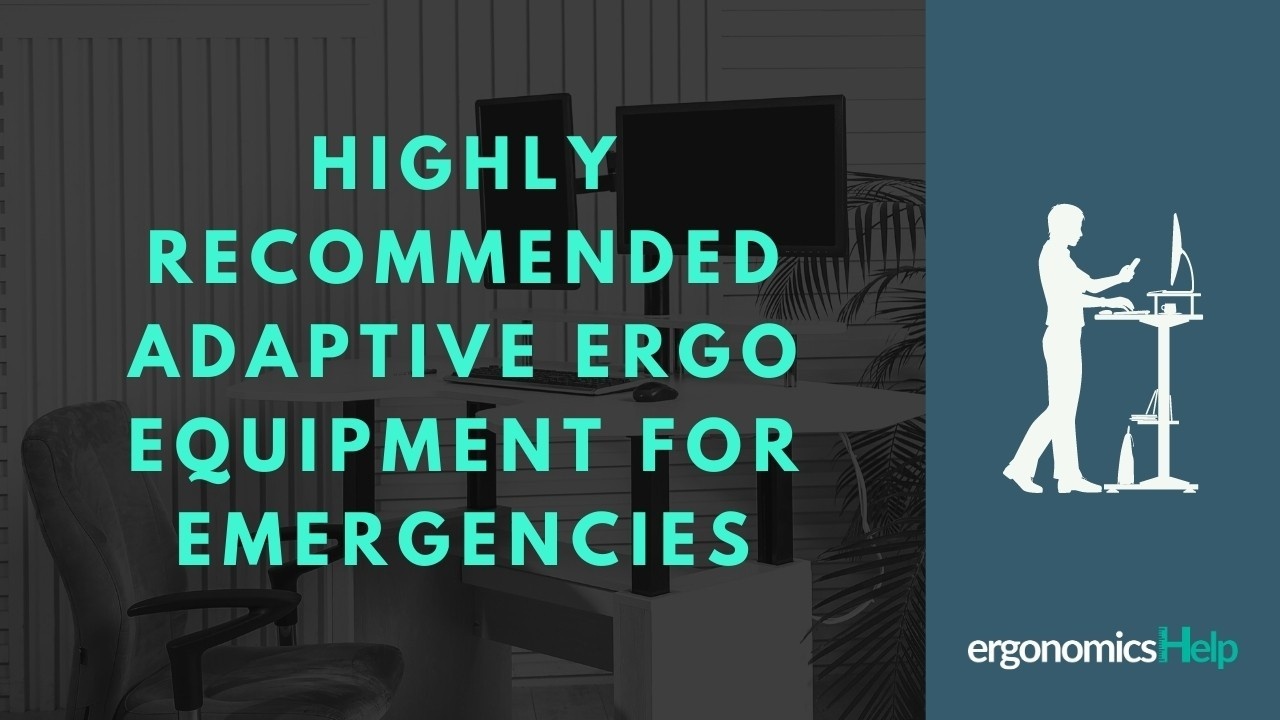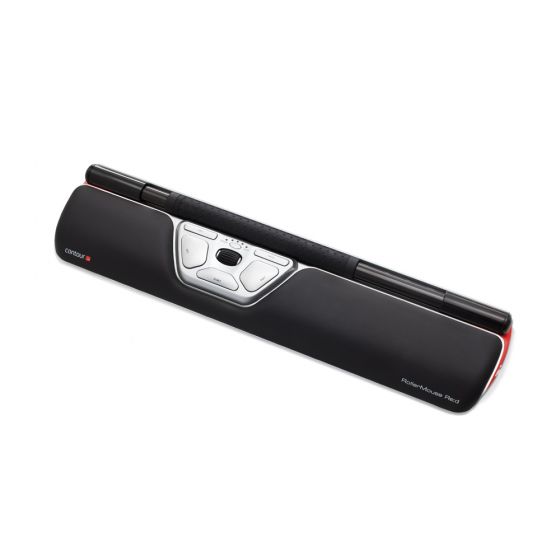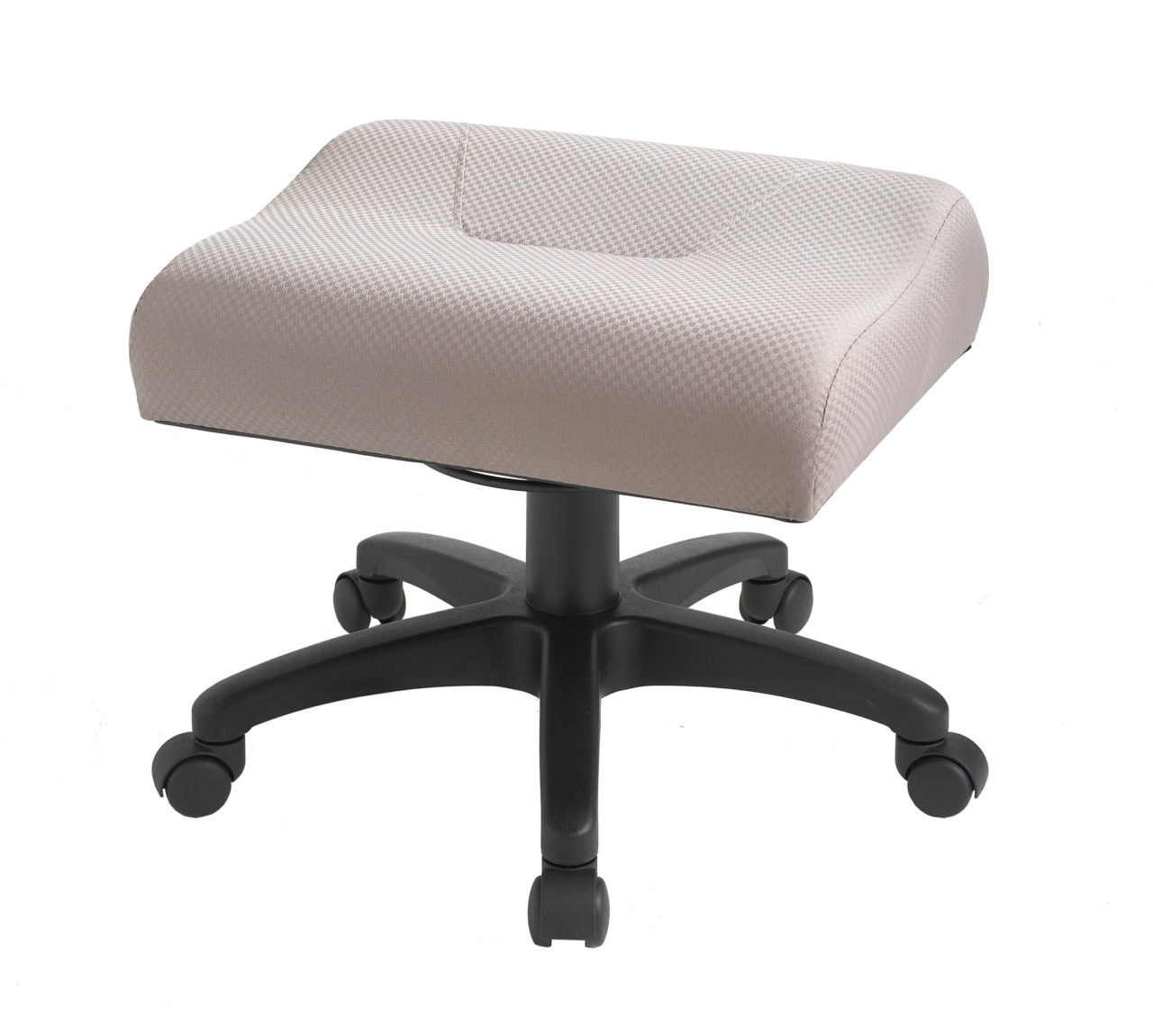Highly Recommended Adaptive Ergo Equipment For Emergencies
Apr 26, 2021
Highly Recommended Adaptive Ergo Equipment For Emergencies
Accidents can and will happen. But having a system in place for workplace injury gives you the readiness you need to respond to client emergencies when they arise. In the world of compensable and non-compensable injuries, a game-changer has been to have suitable adaptive equipment at the workplace. It’s an incredible hack that I found to be valuable when I was working as an on-site ergonomist for a large organization. In this post, I’ll be sharing with you the top 3 types of ergonomic adaptive equipment that all organizations should have on hand in case an injury were to happen.
Disclaimer For This Process: As Ergonomics Consultants we can help match capabilities and make job accommodations so that work demands is within what is considered to be functionally appropriate. That employees' treating practitioner would be responsible to provide clearance and functional capabilities, as Ergonomics Consultants our role would be to facilitate this process.
How To Prepare For Emergencies
Just to give you a little bit of background on myself, I managed an in-house ergonomics program to the tune of more than 10,000 employees for a few years with just one ergonomics consultant. For this reason, I had to set up productivity hacks whenever I was doing almost anything. One of the major things that I noticed was that there would be scenarios where I needed to get workers accommodated as fast as possible. And in the event that an employee suffers an injury, either on-the-job or off-the-job, the process of ergonomics shifts to how we can get that person back to work in a safe and effective time frame.
A lot of injuries, even minor sprains and strains, can result in weeks or even months off work. And the longer the workers are away from work due to an injury, the harder it is for them to return to work. Oftentimes, there’s safe work available for the injured workers in order to help them become productive again as fast and safely as possible. A timely and appropriate response is crucial once the workers accept that accommodated work. So what I ended up doing was that we had a number of products available only for work accommodations. These products were the types of equipment that allowed people to return back to work quickly and safely.
This method is something that I introduced to all the organizations that I worked for, and it was an effective value-add service. And I want you to let your clients and the organizations that you work with know that these resources are also available for them. Of course, you'd be the person managing the accommodation and making the adjustments. However, they do need to have these equipment available on hand. Having a systematic approach to manage return to work accommodation will save them time. And when it comes to the return-to-work process, time is important to stop those costly claims and get the person back to productive work. And this is the way to do it.
Top 3 Pieces of Equipment for Client Emergencies
Disclaimer: I’m not sponsored by any of the brands below. The products listed are just the top 3 equipment that I find to be useful.
1. Mountable Sit-stand Desk
Sometimes employees with an acute lower back injury/discomfort only found relief when standing. The equipment that I recommended for them to use was a mountable sit-stand desk, specifically the Ergotron Workfit-S. Rather than being a complete tabletop, this adaptive equipment is mountable to the front portion of the desk. What we did was we get the equipment adjusted to fit the user, so we can return them back to work immediately. Whether or not it was work-related or not work-related injury, we had a number of this unit available. This was an absolute game-changer. Of course, this is just the interim solution to whether they're going to get a full sit-stand desk or if it’s only for a short period of time.

2. RollerMouse
The second most effective device I used in accommodations was called the RollerMouse. The RollerMouse is designed to sit in-between the user and their keyboard. This equipment can be used ambidextrously, so the user can work with either their left hand or their right hand. One particular occasion that the RollerMouse was useful for was from an employee who was walking on the ice and broke their dominant elbow, so they couldn't use the mouse as usual. Our solution was that we get something that they could use with either hand to allow them to work and address the one limiting factor that was holding them back from returning to work. Of course, you also need to consider that they could be working with less hours. But where I was working at the time, the amount of time doesn't really matter as long as that person was back at work. There was still significant cost savings.

3. Leg Rest
The last equipment that I encourage you to consider is a padded leg rest. This was something that we found to be quite useful because it can support the knee and the calf while at work. This was very handy whenever we had employees with sprained ankles and broken legs. It can support the whole lower extremity for injuries like broken legs or sprained ankles and not have any hyperextension in the knee. We had padded leg rests available, so they can work while having their leg supported.

And that’s it! The top 3 pieces of equipment that I had found to be really useful are the mountable sit-stand desk for those who had lower back discomfort, the RollerMouse for people who had a dominant arm injury, and the padded leg rest for those with broken legs and sprained ankles. Make sure to introduce these 3 equipment to your organizations. Let them know that if they have the support and resources, they’ll be more equipped to deal with emergency situations efficiently. Of course, things are very different right now with the work from home situation, and we're doing remote work. But as we get back to working from the office again, we can start to plant these seeds to our clients that these resources are available for them.
Find out how other Healthcare Professionals are building their ergonomics business and join the waitlist for the Accelerate program. Just head here to sign up and you can get an awesome freebie.
Found this content valuable? I would love to hear your feedback.
